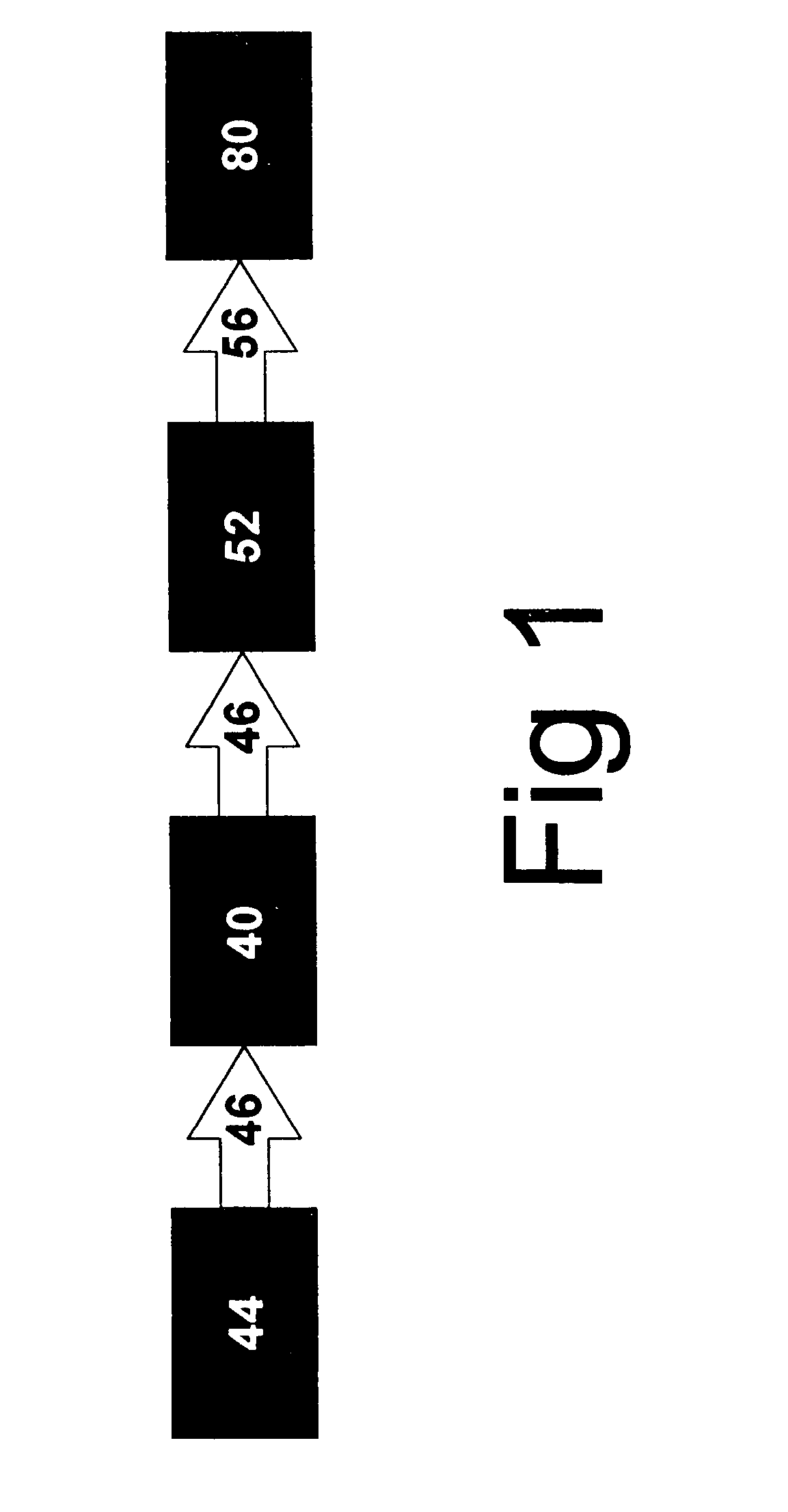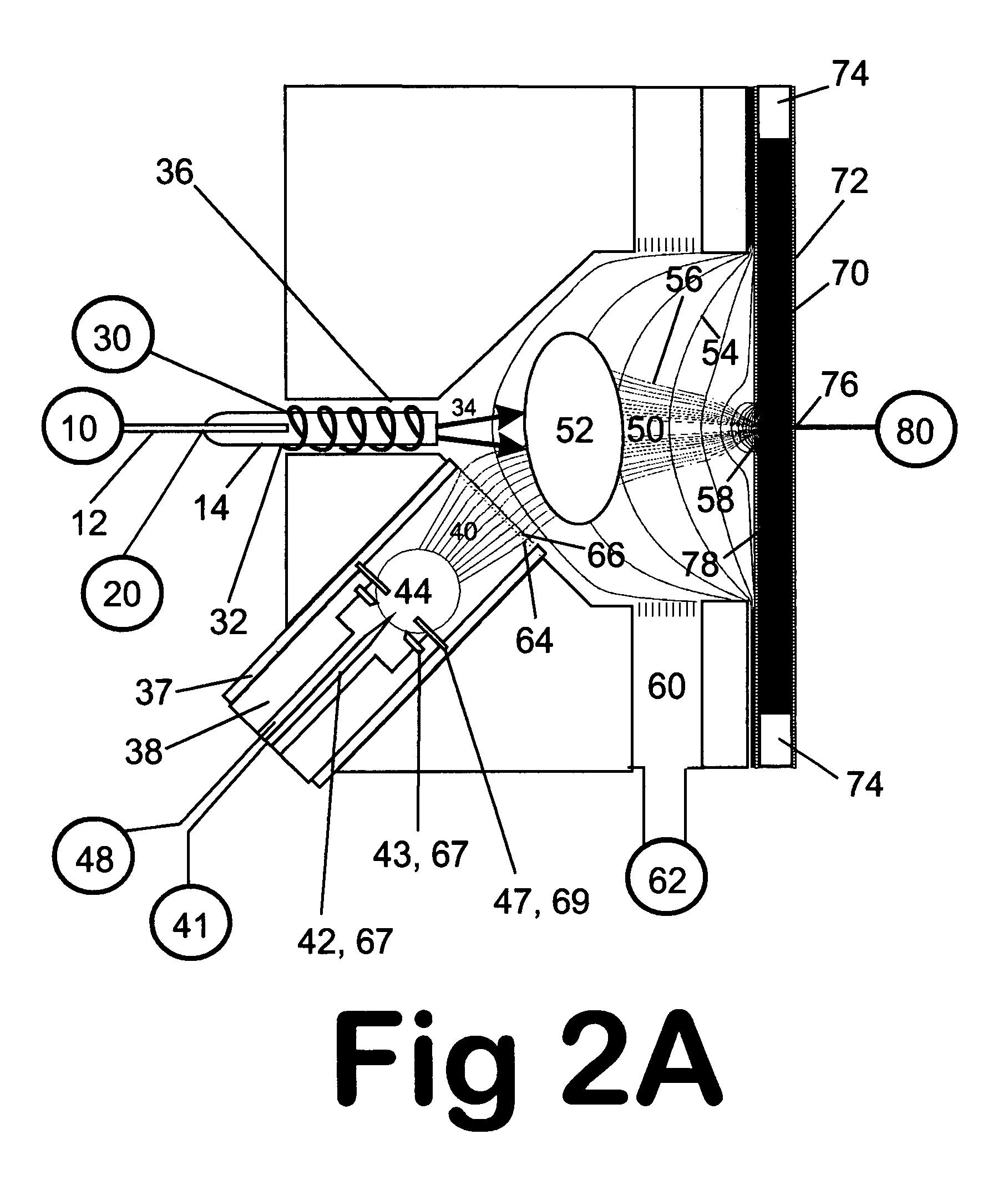Remote reagent ion generator
a technology of reagent ion and generator, which is applied in the field of remote reagent ion generator, can solve the problems of no existing technology having such positional and potential independence of the source, and achieve the effect of small cross-sectional area and slow reaction kinetics
- Summary
- Abstract
- Description
- Claims
- Application Information
AI Technical Summary
Benefits of technology
Problems solved by technology
Method used
Image
Examples
Embodiment Construction
[0059]The invention will be described with reference to the drawing Figures in which FIGS. 1, 2A, 2B, and 2C illustrate a basic preferred embodiment of the invention that employs a Remote Reagent Chemical Ionization Source, hereafter referred to as a R2CIS.
[0060]FIG. 1 shows the general sequence of hardware and events. Reagent ions are created in the R2CIS reagent ion source region 44 and move along ion trajectory 46 to a field-free transfer region 40. Passage of reagent ions into a reaction or sample ionization region 52 causes sample ions to be produced, which move via sample ion trajectories 56 to a sample ion collection region 80.
[0061]Referring now to FIG. 2A, reagent ion species are generated in the R2CIS reagent ion source region 44 by discharge ionization from a first electrode (needle) 42 biased relative to a second electrode 43. The voltage differential applied between the two discharge electrodes is supplied by a conventional high voltage supply source 67. Reagent gas is ...
PUM
| Property | Measurement | Unit |
|---|---|---|
| diameter | aaaaa | aaaaa |
| diameter | aaaaa | aaaaa |
| aperture diameters | aaaaa | aaaaa |
Abstract
Description
Claims
Application Information
 Login to View More
Login to View More - R&D
- Intellectual Property
- Life Sciences
- Materials
- Tech Scout
- Unparalleled Data Quality
- Higher Quality Content
- 60% Fewer Hallucinations
Browse by: Latest US Patents, China's latest patents, Technical Efficacy Thesaurus, Application Domain, Technology Topic, Popular Technical Reports.
© 2025 PatSnap. All rights reserved.Legal|Privacy policy|Modern Slavery Act Transparency Statement|Sitemap|About US| Contact US: help@patsnap.com



